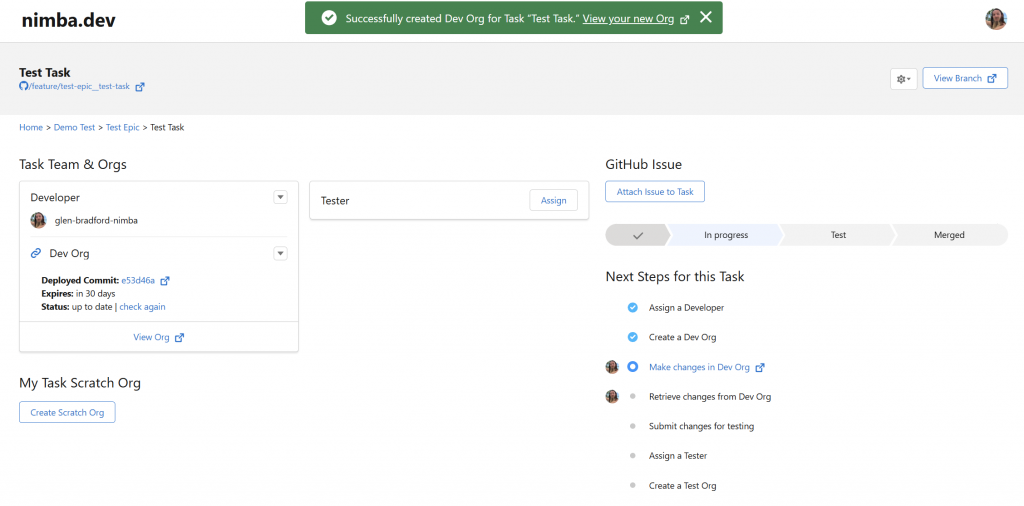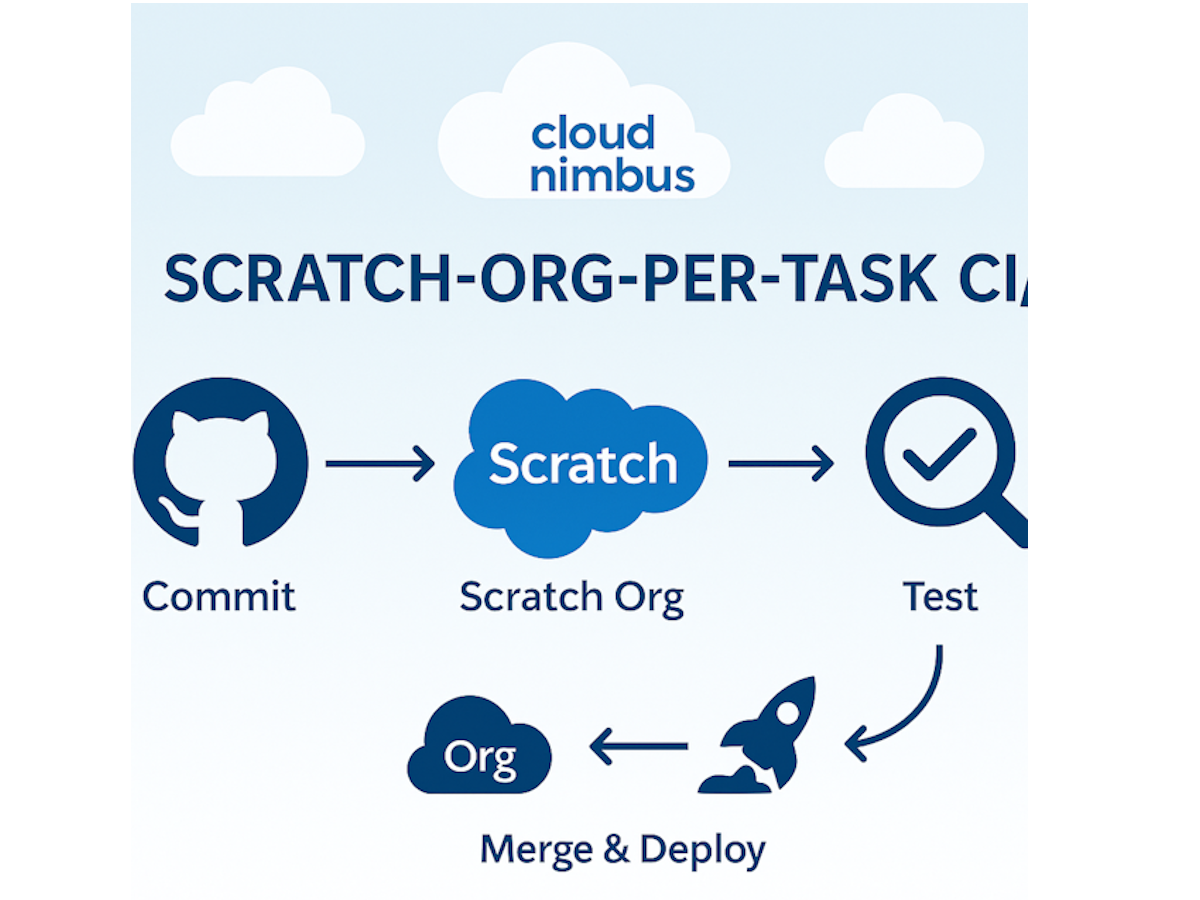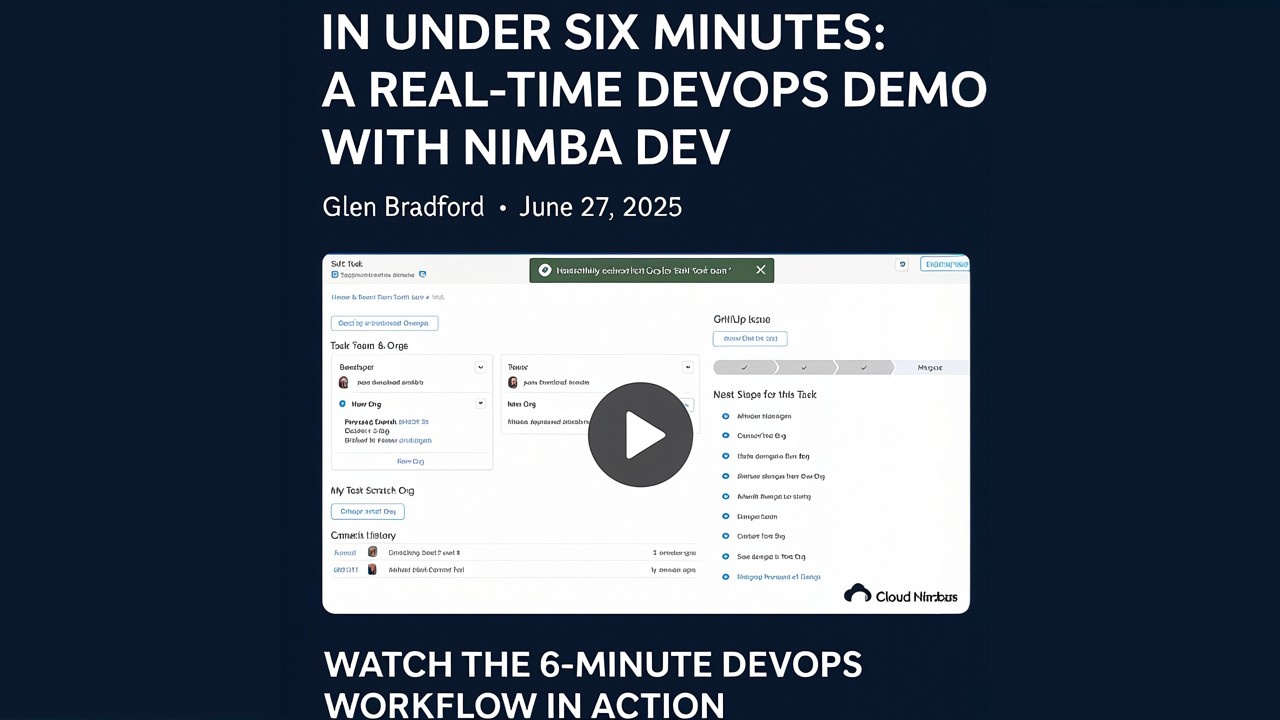“Are you really following world-class DevOps practices for Salesforce, or just hoping that your next deployment doesn’t break production?”
At Cloud Nimbus LLC, hope isn’t a strategy—we treat every user story like its own mini-release, backed by GitHub-powered automation and airtight testing.
Why Scratch-Org-Per-Task Beats the Old Sandbox Shuffle
| Legacy “One Dev Sandbox” Flow | Cloud Nimbus Flow |
|---|---|
| Shared sandbox → tangled changes → surprise merge conflicts | Isolated scratch org per task—zero collision risk |
| Manual change tracking | Source-control first: every edit is a Git commit |
| Late-stage bugs found in UAT | Early, repeatable tests in fresh scratch orgs |
| Weekend release war rooms | Push-button GitHub Actions deployments |
Our End-to-End Pipeline (30-Second Tour)

- Spin Up a Scratch Org for the Task
A new, pristine Salesforce environment generated in seconds. - Code, Configure, & Commit
- We work locally or in VS Code, leverage Salesforce CLI, and commit changes to a feature branch as unlocked/unpackaged metadata.
- Every commit triggers static code analysis (PMD, ESLint, SFDX scanner) right in GitHub.
- Open a Pull Request → Auto-Spin Test Org
- Creating a PR fires a GitHub Action that builds another scratch org seeded with the PR’s exact commit set.
- Apex tests, Jest tests for LWCs, and custom regression suites run automatically.
- Peer Review & Merge on Green
- Humans review code, bots review quality gates.
- When everything is 💚, we merge to
main.
- Continuous Delivery via GitHub Actions
- GitHub releases a versioned package (if unlocked) or deploys the “unpackaged” delta using SFDX deploy commands.
- Actions promote the artifact through dev → QA → UAT → Production with approval gates and chat-ops notifications.
- Auto-Clean
- Scratch orgs self-destruct after 24 h (configurable), keeping org limits happy and your cost at $0.
Tangible Wins for Our Clients
| Metric | Before Cloud Nimbus | After Cloud Nimbus |
|---|---|---|
| Mean time from ticket → prod | 14–21 days | < 5 days |
| Hot-fix frequency | 1 per sprint | < 1 per quarter |
| “It worked in UAT” roll-backs | Routine | Rare edge-cases |
| Developer onboarding | 2+ days to get a sandbox | 15 minutes to first commit |
Why Unpackaged (Source-Tracked) > Giant Managed Packages
- Granular Rollbacks – Revert just the problematic flow, not the whole release.
- Traceability – Git blame shows exactly who changed what when.
- Easier Code Reviews – Smaller diffs, focused conversations.
- No Lock-In – Your metadata stays portable across orgs and vendors.
Security & Compliance Baked In
- Least-Privilege Service Connections – GitHub secrets store org-specific auth tokens; rotations follow SOC 2 best practices.
- Static & Dynamic Scans – SFDX scanner + OWASP ZAP for exposed endpoints.
- Audit Trail – Every deployment artifact is checksum-verified and timestamped.
Ready to Level-Up Your Release Game?
If your current process still involves manual change sets, shared sandboxes, or Friday-night war rooms, let’s talk. Cloud Nimbus LLC will:
- Map your existing workflow → identify bottlenecks.
- Stand up a scratch-org pipeline in your own GitHub repo.
- Coach your team until their first zero-downtime release.
👉 Book a 30-minute discovery call and see how fast “world-class” can become your new normal.
Written by Glen Bradford, Founder & Principal Architect at Cloud Nimbus LLC.


